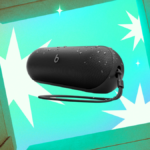Exploring the Evolution of Touchscreen Flip Phones
Initially, embracing touchscreen flip phones proved to be a challenge. Clamshell designs have always been favored, yet previous models came with significant drawbacks, including hefty price tags, noticeable creases on the display, small external screens, and a sense that their hinges might not withstand everyday use. This left an impression that these modern flip phones were not yet superior to their keypad-driven counterparts. The revival of the Motorola Razr series in 2020 particularly raised eyebrows, being a direct nod to nostalgia.
For a significant timeframe, these reservations appeared justified. Motorola had positioned itself as a budget-friendly option, and the early versions of the Razr struggled to compete with the likes of the Samsung Z Flip. With a bulkier design and a more prominent crease, it seemed evident that sticking to a conventional smartphone might be a more sensible choice.
However, over time, Motorola has made noteworthy advancements with the Razr, managing to enhance the device while maintaining affordability. While it may not hold the title of the most advanced smartphone on the market, the new Razr stands a strong chance of being hailed as the top choice in the flip phone segment. This evolution has led to a growing appreciation for the unique appeal of flip phones in comparison to their traditional counterparts.












